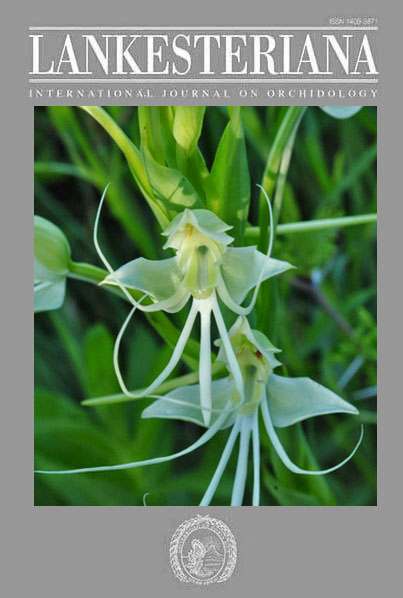Lista comentada de Orchidaceae en Uruguay y su distribución en ambientes y eco-regiones
DOI:
https://doi.org/10.15517/lank.v20i3.45193Abstract
From an economic and taxonomic point of view, Orchidaceae is one of the most studied botanical families. In Uruguay it is poorly represented and known, and descriptive data are fragmented and scattered. In the present work the information on the species of this family is updated based on herbaria records, previous publications and field trips made in the country during 2018–2019. A list of Orchidaceae from Uruguay is presented with 59 species belonging to18 genera. Four species were found endemic to the country, while 22 species are endemic to the Southern Cone region. The Gondwanic Sedimentary Basin was the ecoregion with the highest species diversity (51%) and the richest departments were Cerro Largo (25 spp.) and Maldonado (25 spp.). The Highland Forest and Riparian Forest environments presented highest diversity. The most representative genera were Habenaria(12 spp.) Cyclopogon(8 spp.) and Brachystele(6 spp.). The species with the widest distribution were Habenaria gourlieana, H. parviflora, and Cyclopogon elatus, which were found in all ecoregions and in 15 out of 19 departments of the country.
Key Words: Epidendroideae, Neotropics, Orchidoideae, South America, Southern Cone
Downloads

Downloads
Published
How to Cite
Issue
Section
License
According to the Open Access policy promoted by the University of Costa Rica, all the papers published by Lankesteriana are licensed under the Creative Commons copyright and can be downloaded free of charge. The journal holds copyright and publishing rights under the CC BY-NC-ND 3.0 CR license.
Before the publication of the materials submitted by the author(s) in LANKESTERIANA, the author(s) hereby assign all rights in the article to the Lankester Botanical Garden.




